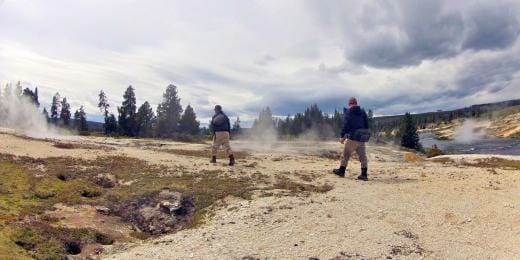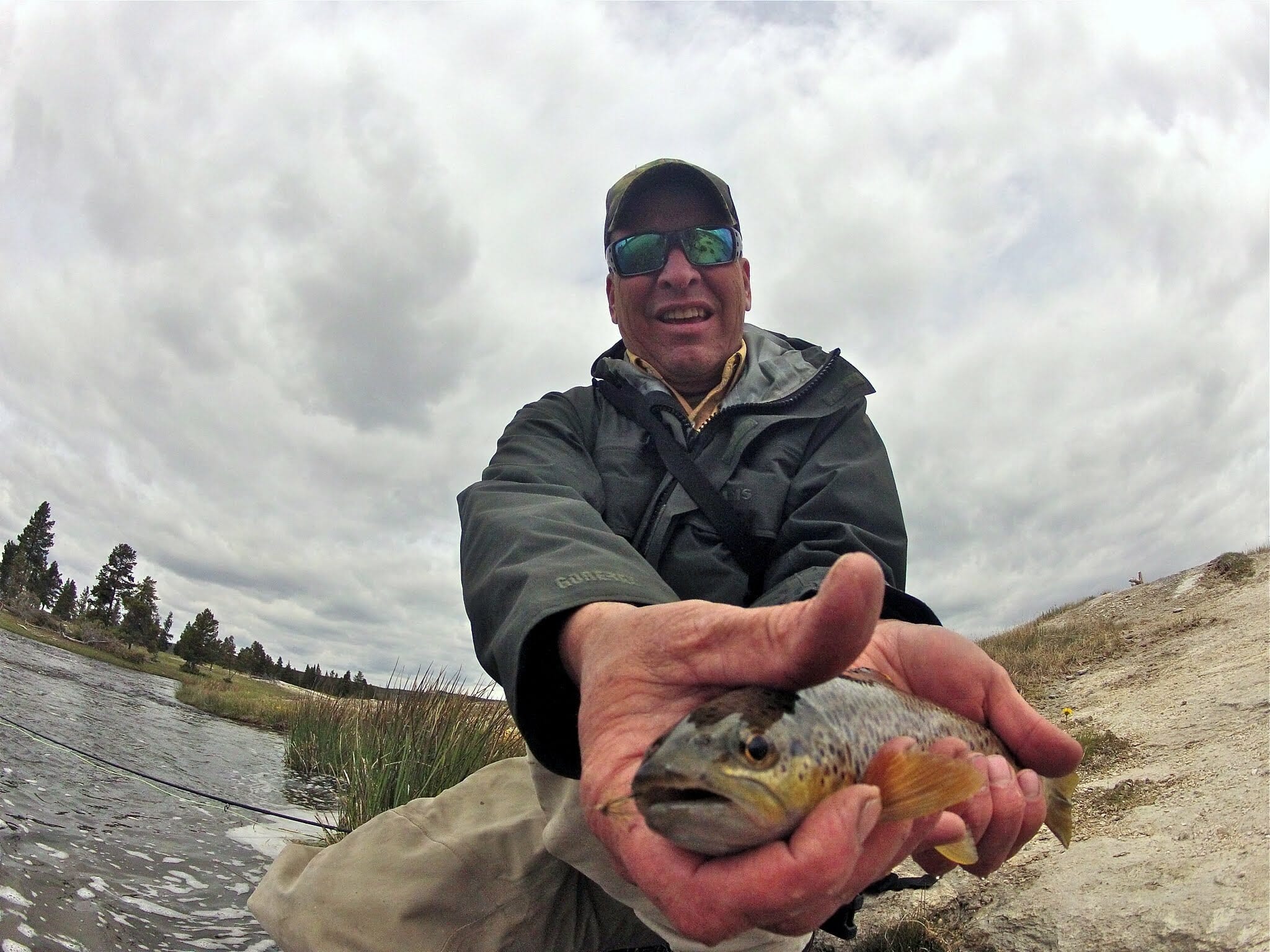Tom Reed with a nice Firehole River brown trout.
We’d walked maybe a mile away from the bike trail that crosses the Firehole River, just upstream of the Fountain Flat parking area, putting a bit of distance between us and the last couple of anglers we wandered past that early June day several years back.
The Firehole is a fascinating stretch of trout water that fishes best just after it opens to angling the Saturday before Memorial Day in May until about mid-June, when weather and thermal inflow from geysers and hot pots conspire to make the mainstem of the river a bit too warm for trout, even the hearty Loch Leven and Von Behr strains of brown trout that were first introduced to Yellowstone National Park waters in the last 1880s. Fishing heats up when colder weather tempers the region’s thermal influences, sometime toward the end of September and into October.
Even though non-native fish haven’t been stocked intentionally in Yellowstone waters since the 1930s, fish like the brown trout that inhabit the Firehole and its tributaries have done quite well, moving throughout the system and becoming much-appreciated angling targets. On this blustery June day, three of us wandered along the banks of the river where it wanders away from the Grand Loop Road and, by extension, away from the casual roadside angler.
We cast small wet flies with names like Hornberg or Rio Grande King across the riffles of the eminently wadeable river, connecting with some nice fish up to about 17 inches. In a stretch of froggy water, the bigger browns were keen on black streamers on the swing, and we all connected with fish that most would consider Firehole trophies.

The Firehole River in Yellowstone National Park is an angling destination, even though its browns and rainbows are not native to the river.
The Loch Leven strain of brown trout comes from the lake of the same name in Scotland. According to National Park Service records, it was first stocked in the upper Firehole in 1889. The Von Behr strain from Germany first showed up in Nez Perce Creek in 1880 after 9,300 fingerlings were planted in this Firehole River tributary that enters the river not too far from where I and my buddies fished that day.
In the years since, the two strains of brown trout have intermingled on fall spawning redds, actually creating a hybrid of the two that is likely unique to the Firehole. Today, every fish in the Firehole, from it’s brown trout and rainbow trout in the river’s main stretches to its brook trout in the upper reaches, is wild. No stocking has occurred over the better part of a century.
As anglers, we can thank those early fisheries managers for the river’s storied brown trout, because until those fish were stocked, the river was fishless above Firehole Falls. The native fish for the lower Firehole, before it comes together with the Gibbon River to form the Madison, include west slope cutthroat trout, mountain whitefish and possibly Arctic grayling. The grayling and the cutthroats are all but gone from the Firehole-Gibbon system (although there are some restoration efforts under way), but a few whitefish hang on and can be caught in the Madison in the spring.
Yes, it’s a man-made fishery, but one that is beloved, and rightly so. I know the three of us were silently grateful on that early June day for those first plantings in the upper river. Without them, we’d just have been three wandering tourists.
— Chris Hunt



